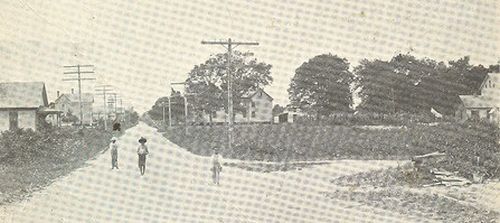Whitesboro, New Jersey was established in 1902 as a town exclusively for African Americans. The idea came in response to increasing white resistance to black residents in Cape May County, New Jersey. The African-American Equitable Industrial Association, founded by Reverend J.W. Fishburn and four other members of Cape May City’s AME Zion Church, purchased the land in an effort inspired by the self-help philosophy of Booker T. Washington. With help of many investors from the South, most notably the George H. White Land Improvement Company, the Association purchased 2,000 acres of land approximately ten miles north of Cape May City for $14,000.
In December of 1901, four months after the purchase was finalized, advertisements began appearing for the sale of the lots in magazines such as Colored American. Prospective colonists had to be of good character, and in the spirit of Washington needed to possess steady and industrious habits. Once approved, a colonist would receive a number of lots, each 50 feet by 150 feet (about a sixth of an acre) for a down payment of $5 per lot and a promise to till the land.
The residents were under no obligation to build a home or any other structure on their lot, but the land was promised to be good for growing farm produce and raising chickens, so building homes was encouraged. Colonists had ten years to pay off the initial purchase price of fifty dollars and were charged an additional $2 to $5 a month depending on their income. Relatively few of the first colonists were actually from New Jersey as the Equitable Association had hoped; most of them were migrants from Virginia or North Carolina, where the name “George White” was familiar. In March of 1902 the town named itself “Whitesboro” after its most famous investor, George White, who when his term ended in 1901, was the last black Congressional representative until 1929.
In addition to purchasing the initial land for the town, the George H. White Land Improvement Company reinvested its profits back into the community. Although most of the town’s residents were preoccupied with farming the land, many residents were employed by the Improvement Company to construct the first buildings and roads in the community.
Whitesboro’s population grew steadily if modestly reaching 100 residents in 1906. By 1909 Whitesboro boasted two churches, an industrial school for children, a railroad station, a post office and a hotel, all built by residents. The town was also on three railroad lines including one that went east to the Atlantic Coast. The slow steady growth in population continued until the Great Depression. Nonetheless, the town survived financial downturn and continues to exist today with approximately 1,000 residents.

